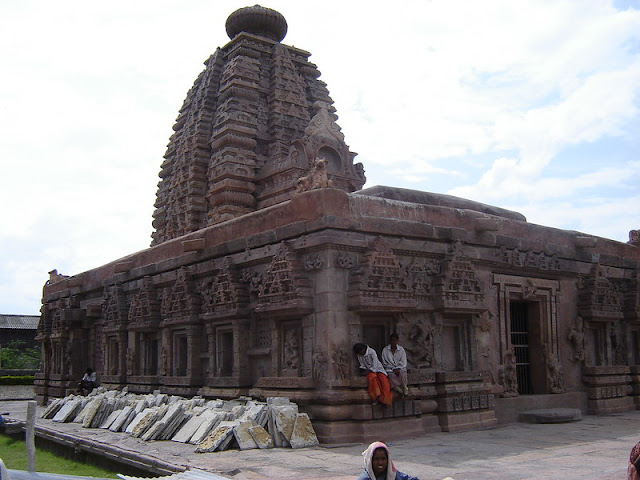Sri Jogulamba Temple - Alampur
Alampur
Sri Jogulamba Temple is
the 5th Shakthi Peetham in India. This is the most famous and Powerful temple
of Goddess Shakthi. Goddess Parvathi Devi is the principal deity of this temple
called Sri Jogulamba Ammavaru. This temple is a group of temples dedicated
to Nava Brahmas. Lord Bala Brahmeswara is the
presiding deity among Nava Brahmas here. The Nine Brahma temples here are Bala Brahma, Kumara Brahma, Arka Brahma, Veera Brahma, Viswa Brahma, Taraka Brahma, Garuda Brahma, Swarga Brahma, and Sri Padma Brahma. The
Sacredness of Alampur Temple is mentioned in the Skanda Purana.
Goddess Jogulamba is seen
seated on the corpse with a scorpion, frog, and lizard on the head.
It is considered the 5th
Shakti Peeta among 18 Shakti peetams in the country.
Sati Devi’s Upper teeth
row part had fallen here.
It is said that Brahma undertook severe penance for Lord Siva at this location. He was visited by Lord Siva, who bestowed upon him the abilities of creation. Hence, Brahmeswara's name. Goddess Parvati is referred to as Yogini or Jogulamba in this shrine.
The Sri Jogulamba Devi Temple was constructed in the Badami
Chalukyan architectural style and faces east. A few structures with a tiered
gopuram decorated with vibrant sculptures and built in the Dravidian
architectural style. The main features of Chalukyan architecture are the Vimana
on the Garbhalaya with the Amalaka and Sikhara adorning the same. The exterior
of the temple walls is embellished with tasteful sculptural designs, and it
has a Ranga Mantapam. Figures of Dikpalas are fitted in attractive Deva Koshtas
(niche) and Kosta Panjaras, Sculptural figures about Mythology are also
gracefully carved thereon. The walls Presort a picture of Triloka, the upper
part adorned with Khechara Midhuna motifs, the middle part with human Midhuna
& the lower to the third showing demonic forms carved with grace and
elegance. The temple covers a large portion of land, built magnificently with
several carvings on the black stone, and the flooring is made of marble stone.
This temple was built in the
6th century.









Post a Comment